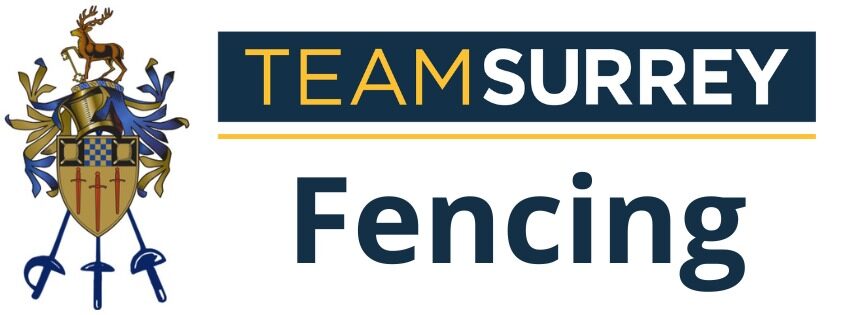Why must beekeepers fight?

Now that you know more about the sport, you may have wondered “what is this specific equipment they are all wearing? Why is it so specific? And why are they wearing so many layers?!”
It may be scary, or ridiculous to look like a beekeeper to practice fencing, but most of the equipment is here to protect you!
Here is a presentation and explanation of the equipment we use in fencing, with our best advice to choose it!

What do fencers wear under all these clothes?
As you can imagine, you quickly get warm when you practice fencing! Our advice is to wear light clothes, such as gym shorts and a breathable T-shirt or top! Don’t worry, there are changing rooms at Surrey Sports Park if you want to get changed before the session!
If you’re starting fencing, or if you just want to give it a go, we advice you to wear sportswear (such as flat trainers, trousers that cover your legs, and a T-shirt) and to tie your hair up if you have long hair.
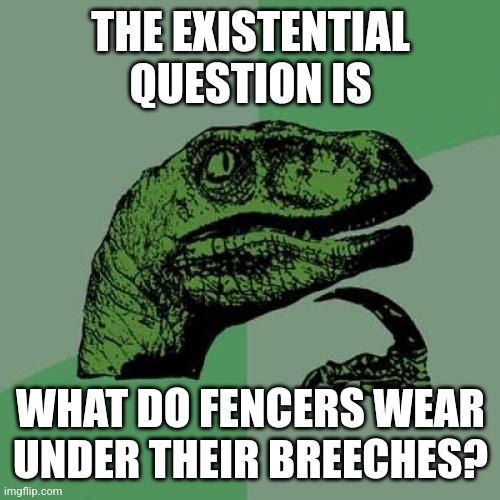

When you start fencing and develop a new passion for long socks!
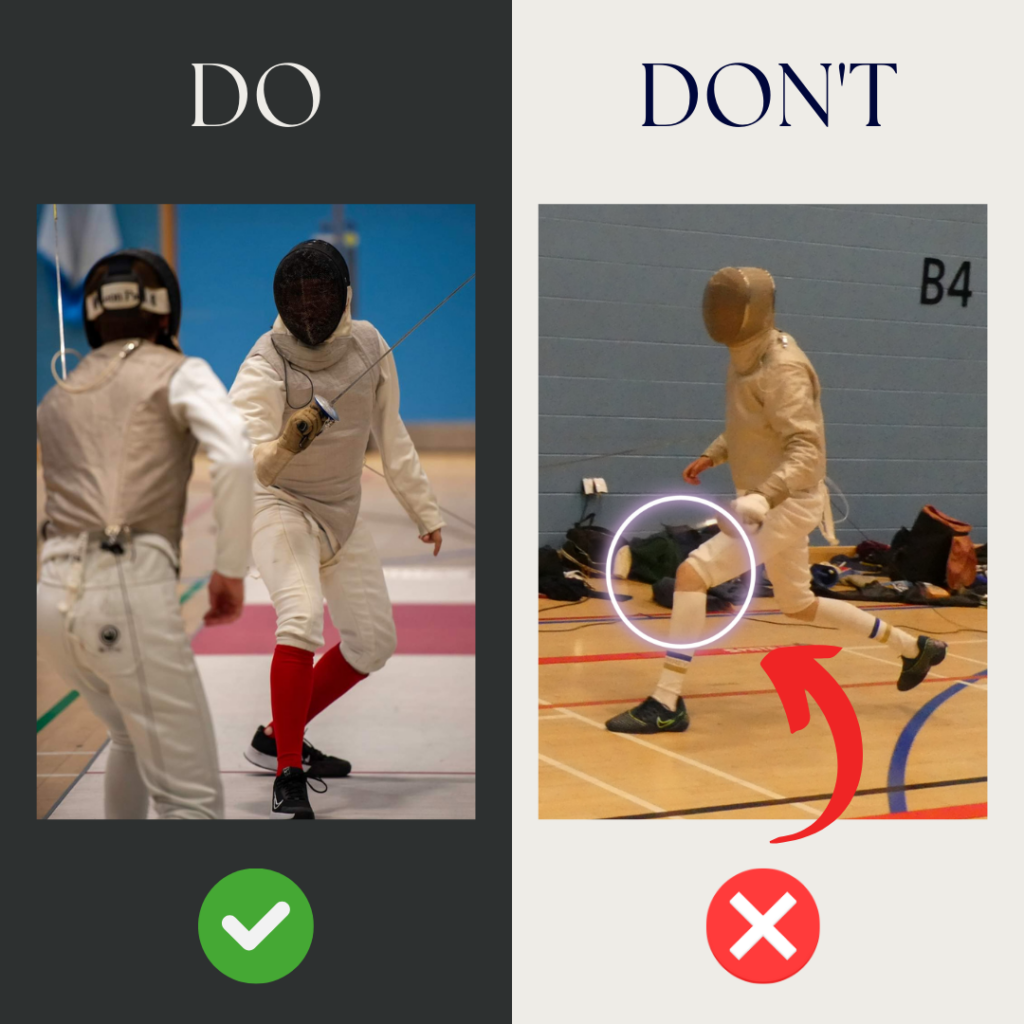
You may have noticed that all fencers wear long socks, they are part of our protective equipment, ensuring all your body is covered to avoid a hit directly to your skin (we promise, it hurts!).
Our best advice is to choose long socks which will keep your knees covered when you’re moving!
If you’re doing other sports using long socks, such as football or equestrian, feel free to use them! We also have our fencing socks in the shop section!

Fencing breeches, or when you start looking like a Musketeer!
Breeches go down to your knees and up to the waist, are a bit loose to allow you to move properly and have elastic straps to keep them in place. They are made of white Kevlar fabric to absorb shocks.
Usually, there are distinct men’s and women’s fitted designs with minor adjustments such as longer breeches for men and narrower waists for women.
It’s quite easy to find your breeches size, as it is (normally) your usual pants. As we have all sizes in stock at the club, we can make you try several ones if you’re unsure! Feel free to ask us!
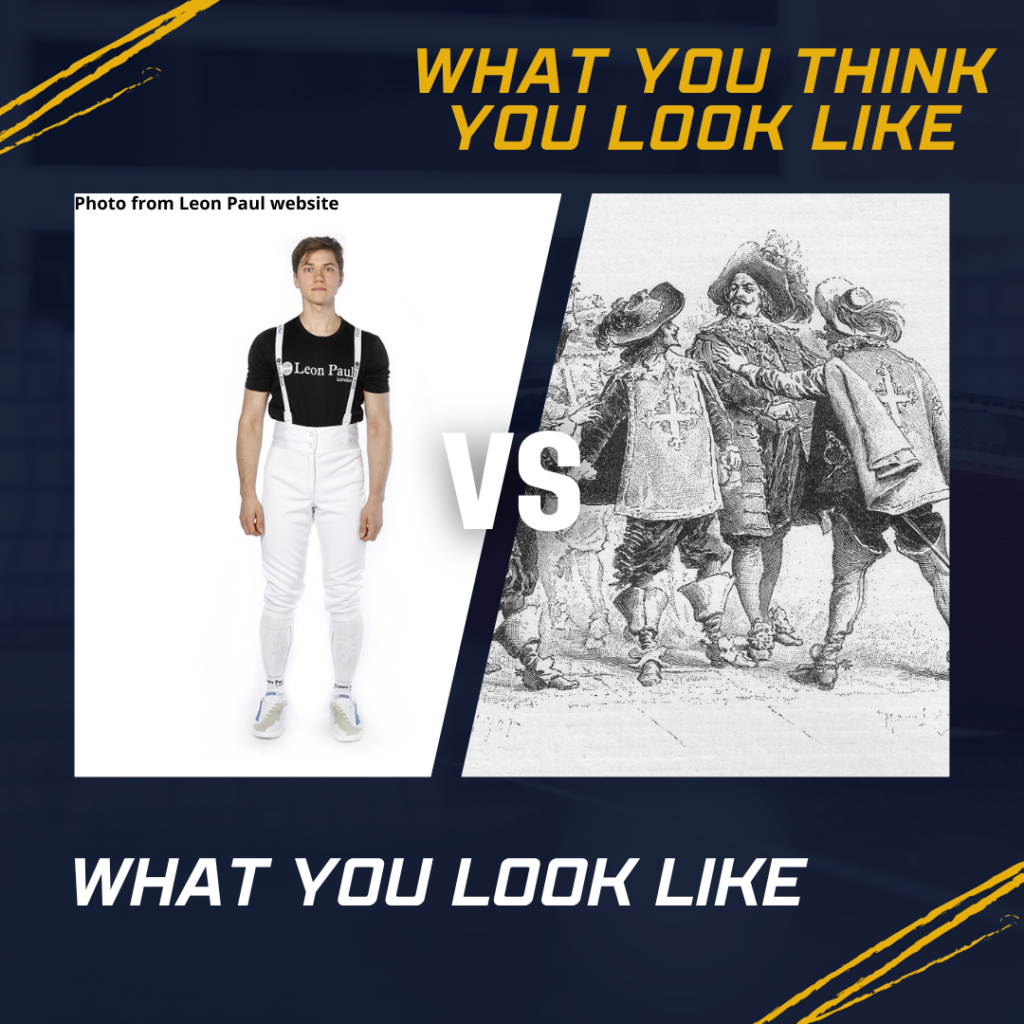

Chest protector? Hold on a minute…
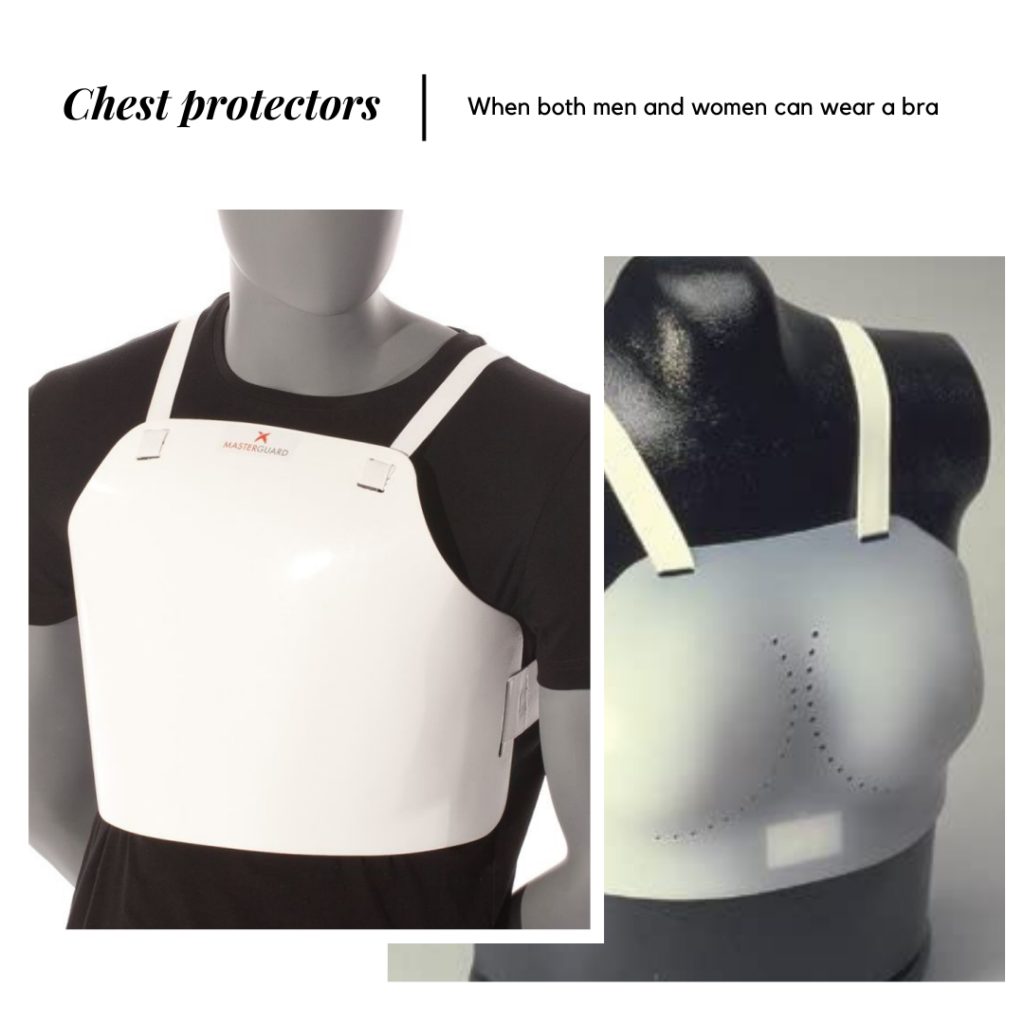
It is compulsory equipment for women, optional for men!
There are several sizes available for women, depending on your breast size! When you’re wearing the protection, it shouldn’t be too loose, or it will move and injure you if you get stabbed, but it shouldn’t be too tight either! The best comparison would be, to choose it the same way you would select your underwear.

A plastron? It sounds like a chivalry thing
The plastron is the protective equipment that is worn on top of the breeches’ straps and chest protector. It is another layer of 800N fabric to absorb the energy of the blade.
It can be right or left-handed, with the sleeve on your dominant/sword arm, which is your more exposed part of the body.
As you can see in the image to the right, you have an elastic band around your neck and another strap around your waist to adjust it and make sure it is comfortable enough when you’re extending your arm.
There are several sizes (S, M, etc), which usually fit the size of your T-shirt, but we can help you find your size if needed!
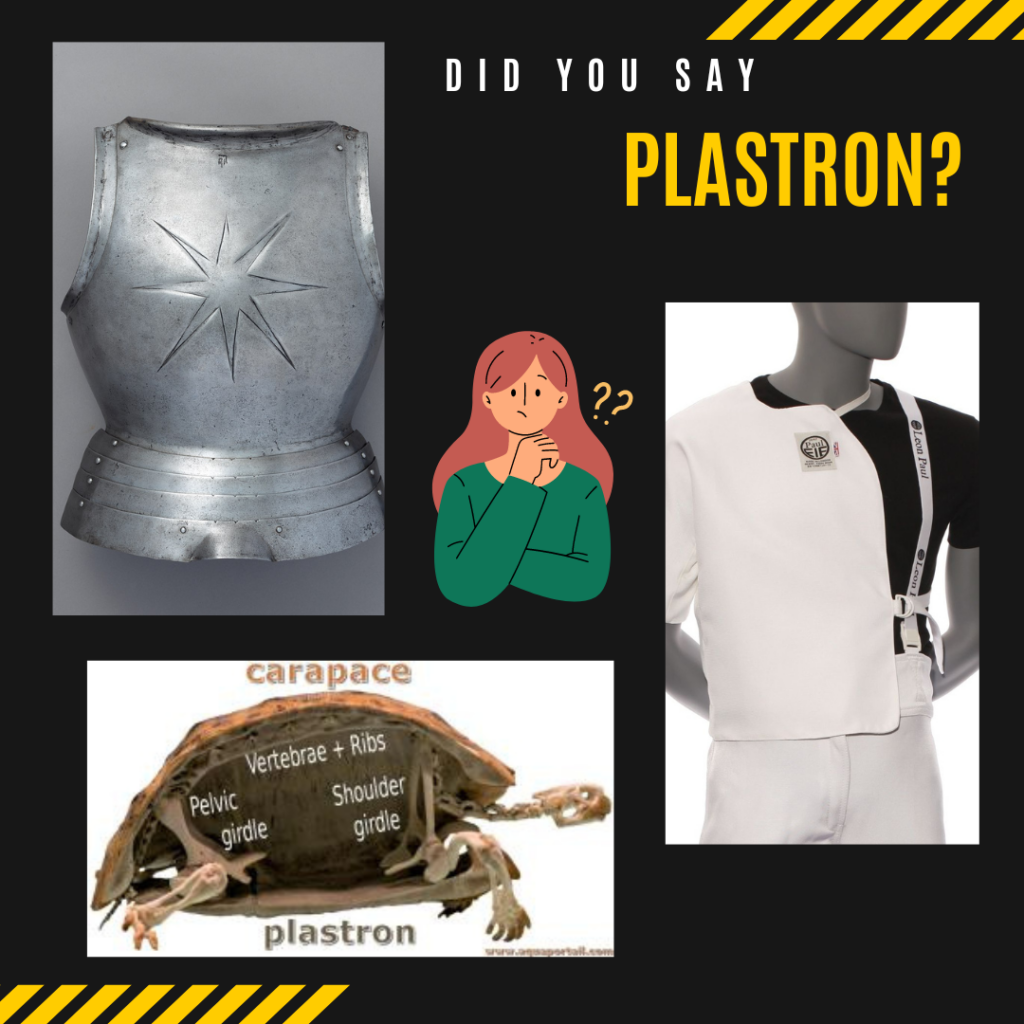

A jacket, at least one familiar piece of clothing! Or maybe not?
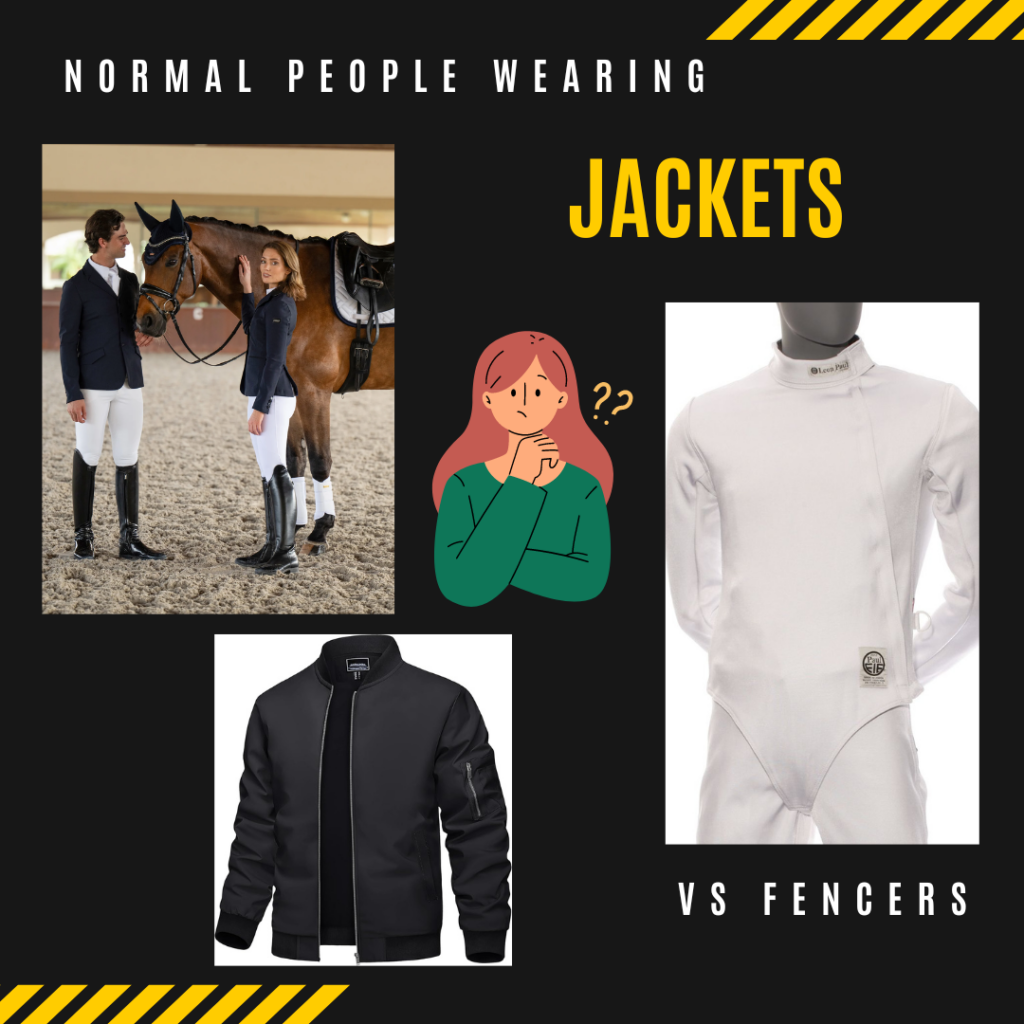
One of the final pieces of equipment is the jacket! It covers your arms, your torso and a part of the neck. It is secured by a zip and a strap between your legs. Always make sure no area of your body is exposed and left unprotected!
There are right and left-handed jackets, as well as ambidextrous. The difference is the location of the zip. For a right-handed jacket, the zip is on the left of your chest, away from the target area, and conversely for a left-handed one. Ambidextrous jackets have a zip at the back, and you usually need help from a friend to zip it properly! Like breeches, jackets are made with Kevlar fabric and are available in 350N or 800N. A 350N jacket is perfect for your club practice!
Your jacket size is usually the size of your T-shirt. They also designed men’s and women’s jackets, with adjustments to the fitting.

The fencing glove! Because we are strange people, we only wear one!
Fencers wear a glove to protect their sword hand (the hand which holds the sword). It is padded on the dorsal part of your hand to protect it if you get hit.
There are 2 types of gloves: one for foil and épée, which is completely white, and one for sabre, with an electric part on the wrist (remember, it is a target area in sabre!)
We have right-handed and left-handed gloves for each type, with a wide variation of sizes (there are 1/2 sizes too). Your glove fits well if you can comfortably use your hand!
Nice and cool detail, most of the fencing gloves have silicon details on the plan of the hand! It improves your grip and avoids slippery contact when holding your weapon!
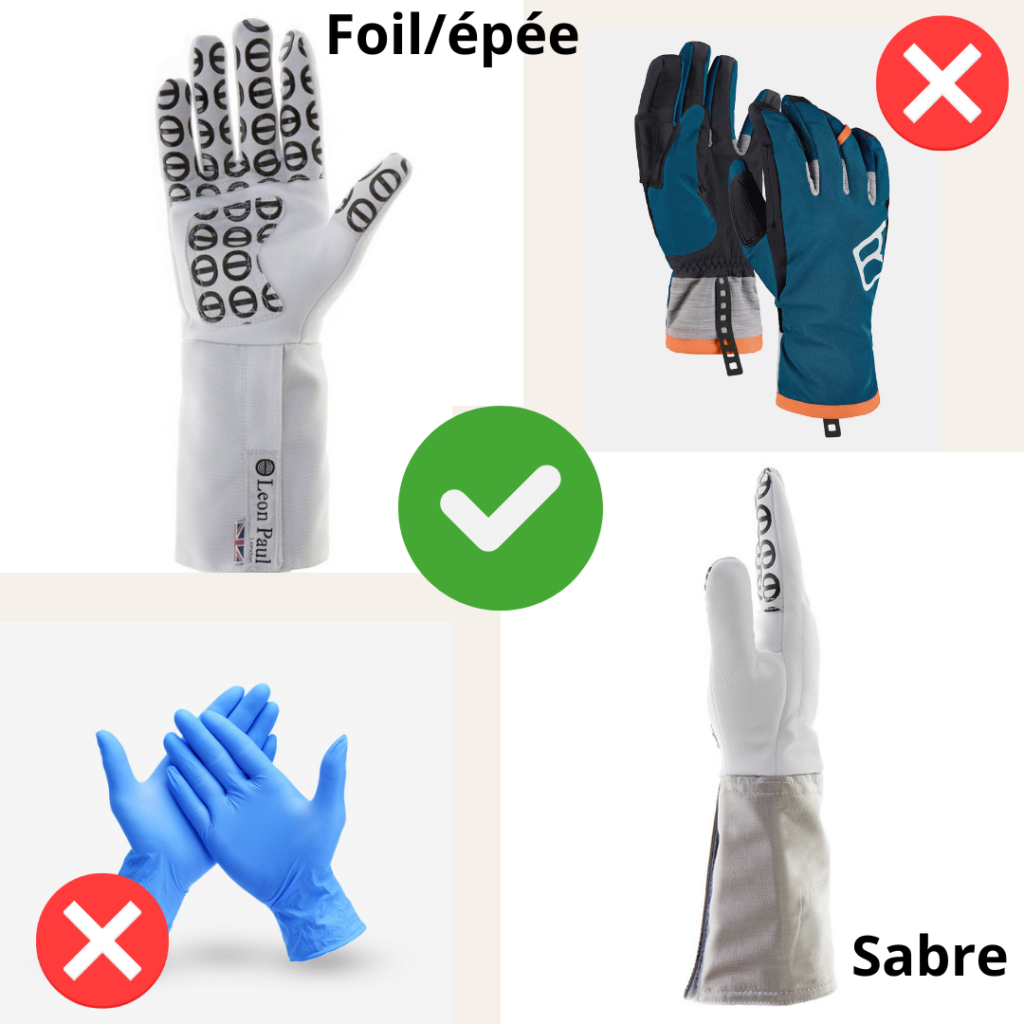

The fencing mask! Not Zorro’s, and not the Covid mask…
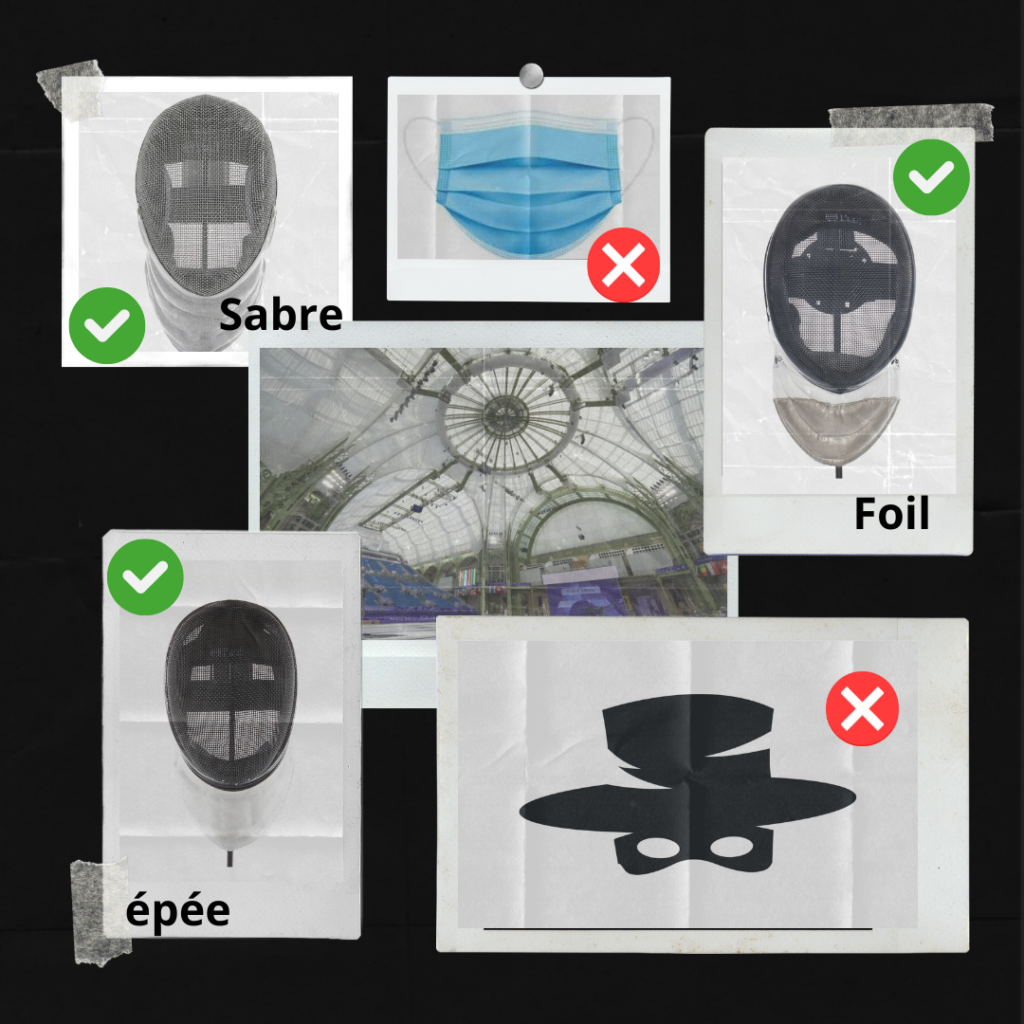
The fencing mask is composed of a grid, to protect you, a bib, the fabric part below the grid and different strapping systems at the back, to keep it on your head!
We have 3 types of masks, one for each weapon. The sabre one, is easy to identify, as it is a full metal-based, grey one! All parts of the mask are conductive! The foil one, has a tiny conductive (grey) part on the bib, as part of the target area! The épée one has a white bib!
You need to choose the mask that fits the weapon you want to practice! (Note that some brands are making masks with exchangeable parts, so you can do several weapons with only one piece of equipment!)
The masks have several sizes: XS, S, M, L and XL. Your mask fits if it doesn’t move on your head! You can adjust your mask a bit using the straps behind your head. Also keep note that each brand is making different shapes of masks, which may fit better depending on the shape of your head!

The part everyone is waiting for… the weapons!
Each type of weapon is giving its name to the discipline!
The sabre has a conductive blade, which means you can use all its length to score! Fencers who do sabre are called sabreurs. They usually do a “cut” movement, instead of poking the opponent. Sometimes, even a light touch is enough to score, as it is very sensitive to pressure!
In comparison, épée and foil only score with the tip of the blade. You need a minimum amount of pressure to score (750 g for épée and 500 g for foil). Their weight is different, with foil being lighter than épée. You may have also noticed a difference in the grip. A straight grip is called a French grip, but you can also have a pistol grip (which looks like a pistol as you can observe in the pictures to the right).
The round disc between the grip and the blade is called the guard and is made to protect your hand from getting a direct hit.
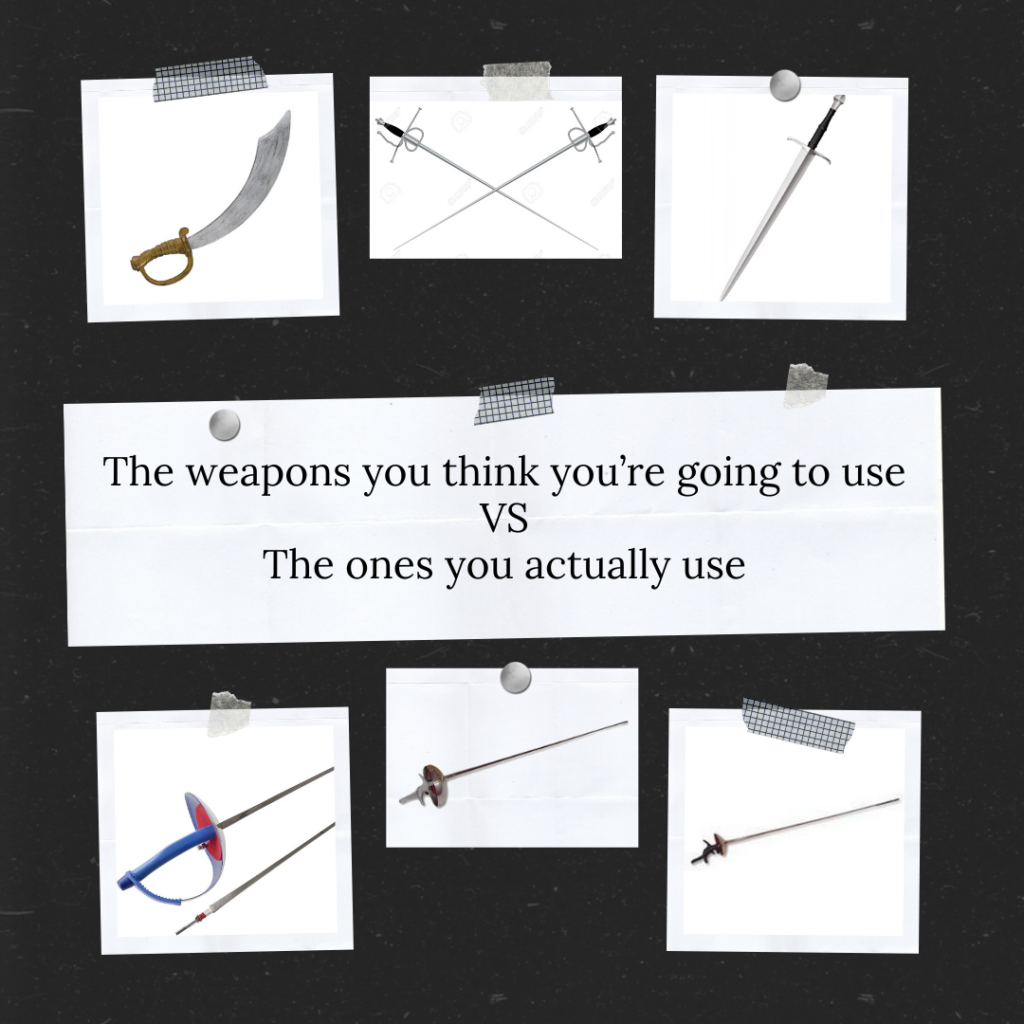
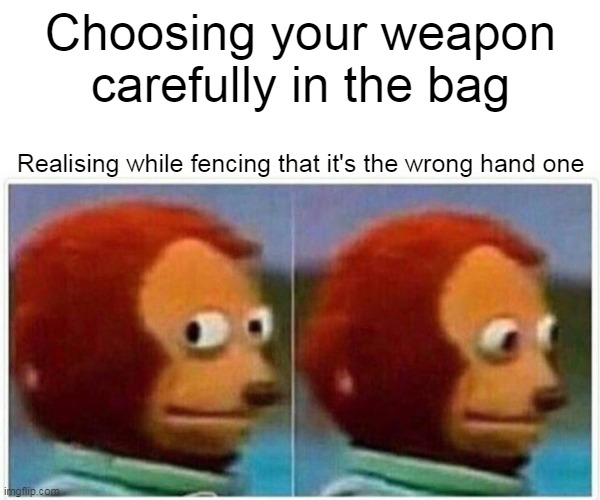
There are several parameters to consider when choosing your blade in the bag.
First of all, you will select a blade that fits your dominant hand! When holding a sabre, there is a socket (where you will plug the wire), that should sit towards the palm of your hand. For a foil, or an épée with a pistol grip, you should have the horizontal part towards the palm of your hand, the upper curved bit between your thumb and index and the down bit in your hand.
Then, there are several sizes for pistol grips in foil and épée! You need to have a grip in your hand to realise if it’s comfortable for you. If you have cramps in your hand while fencing, you may have the wrong size.


